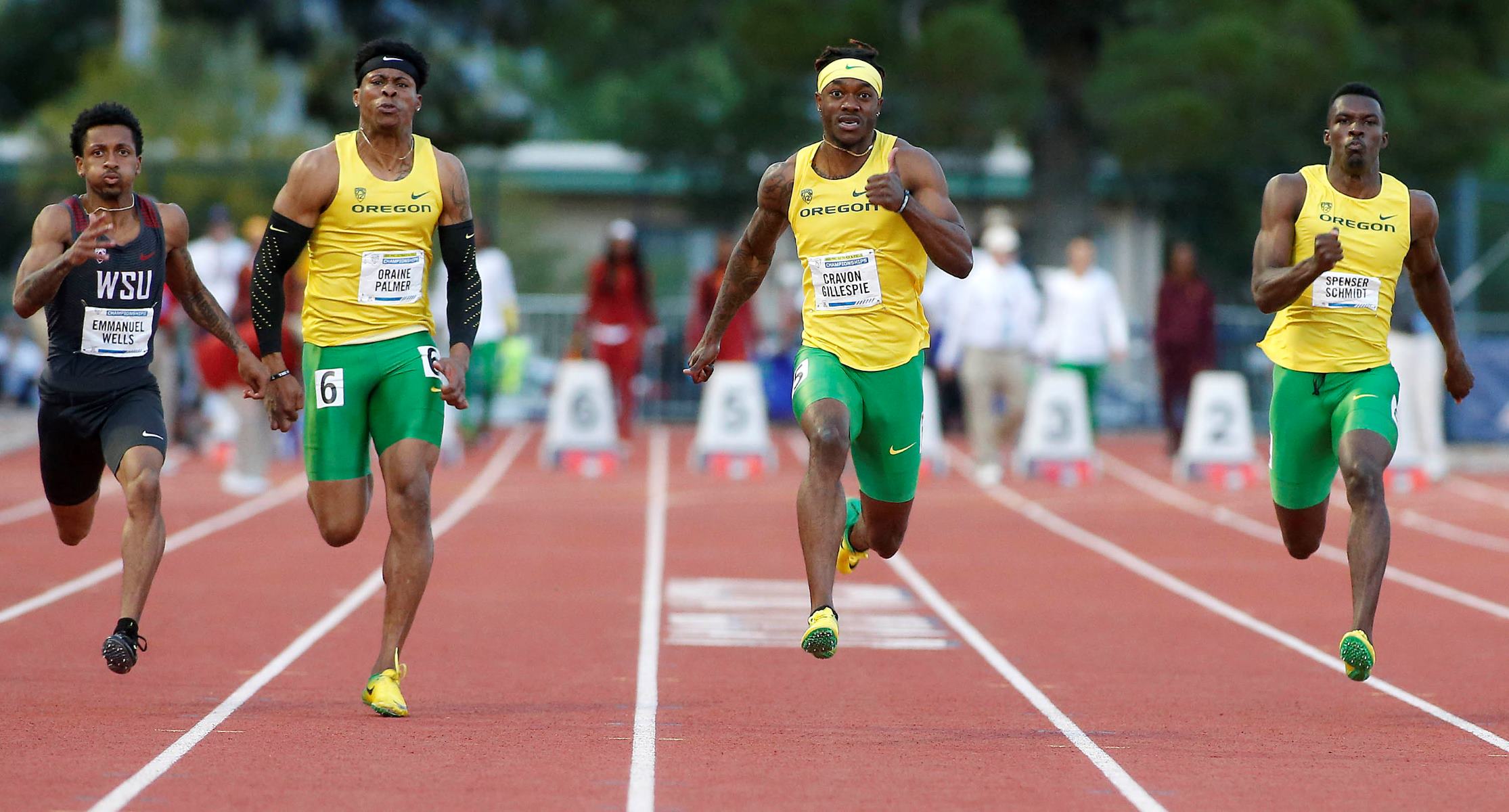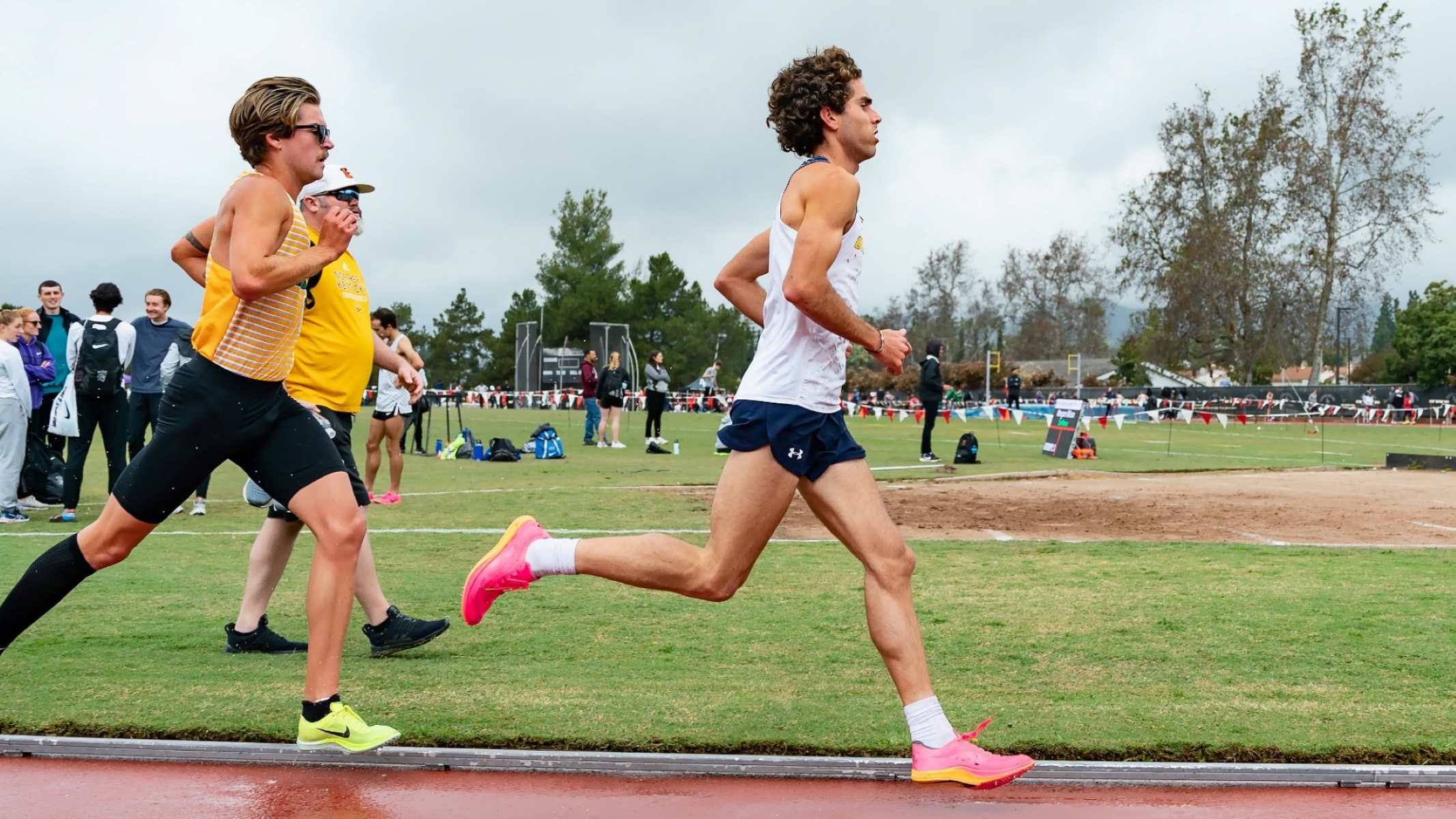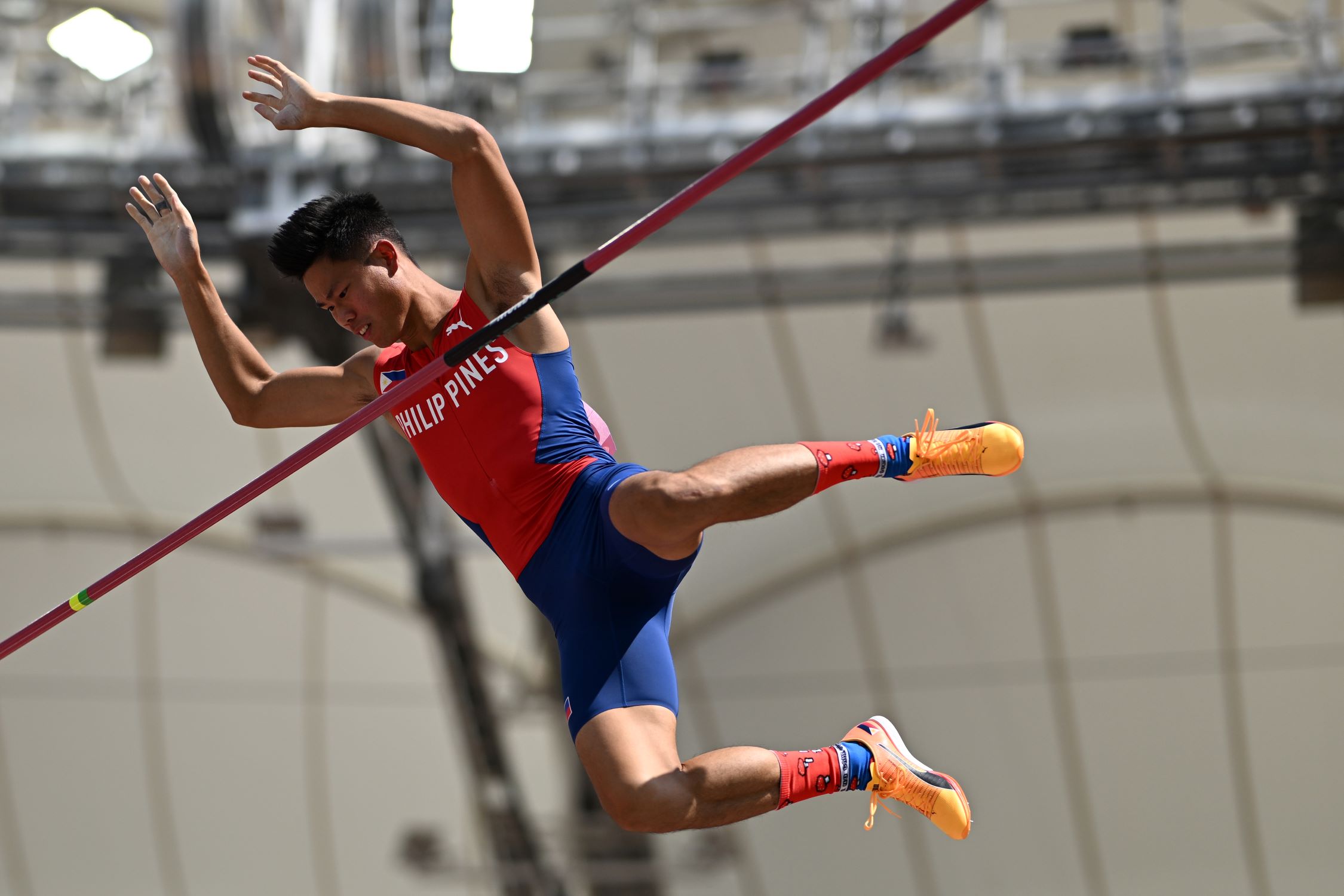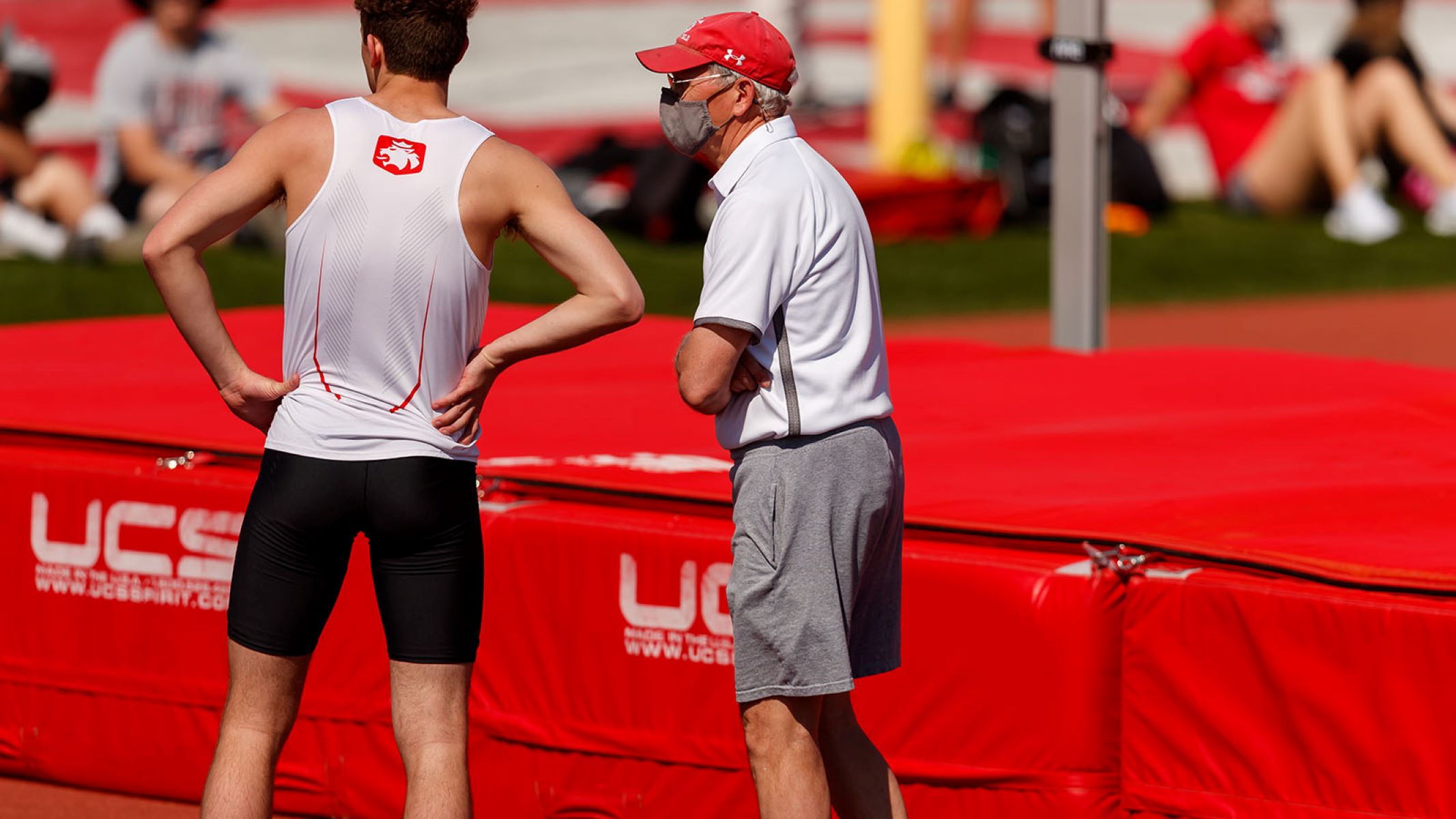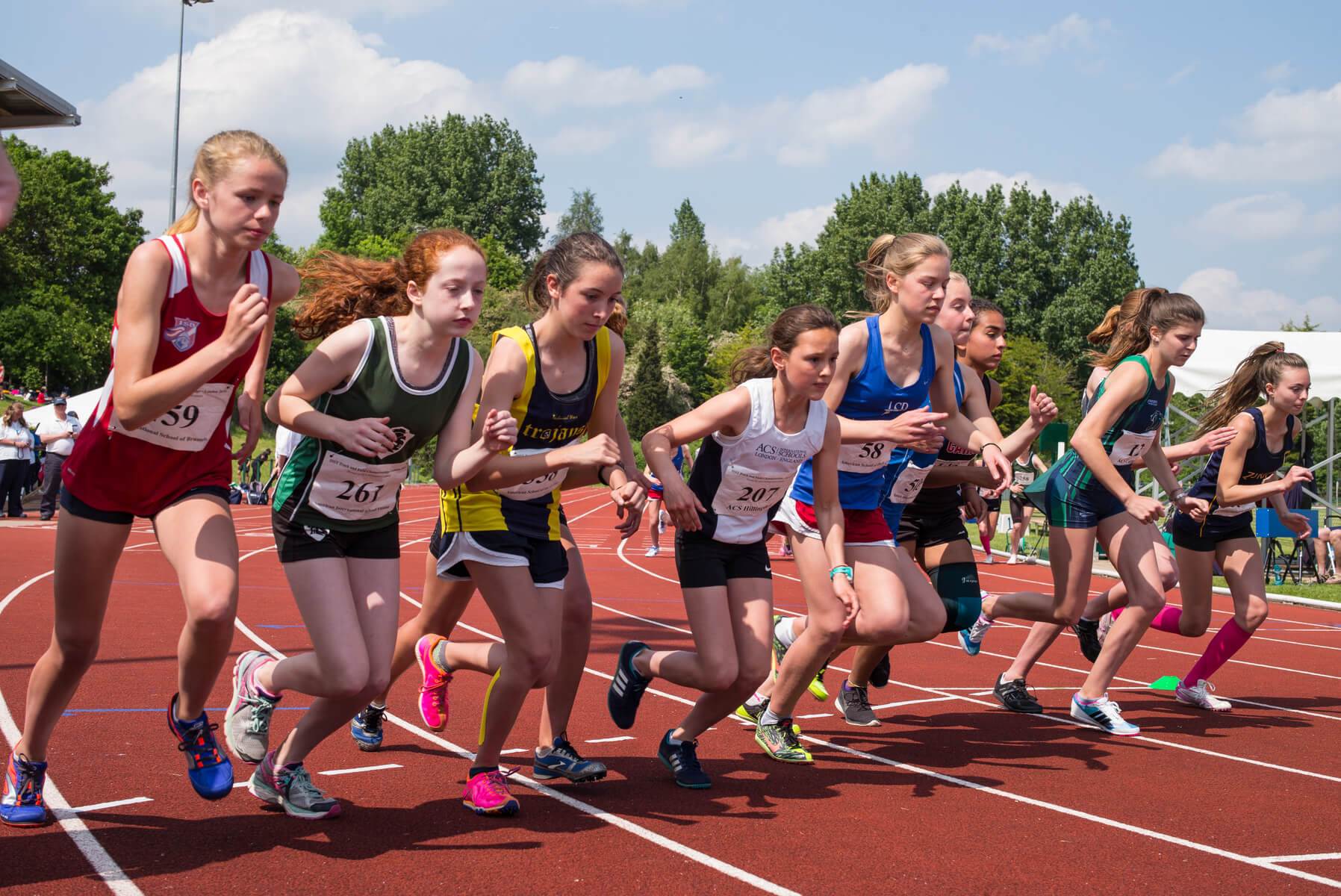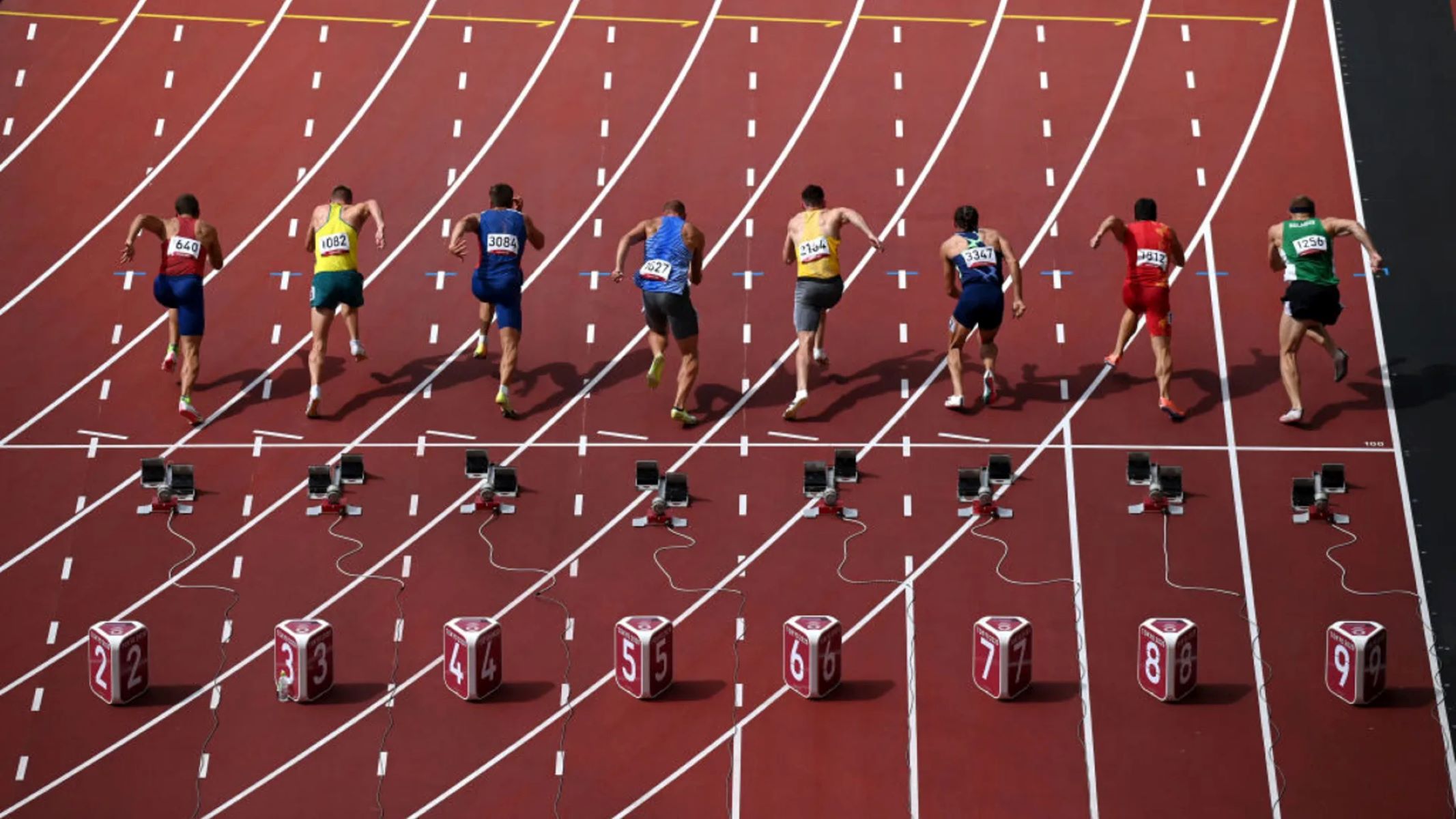

Featured
When Does Track And Field Season Start
Modified: January 22, 2024
Don't miss out on the start of track and field season! Stay updated with our featured articles and get ready to cheer on your favorite athletes.
Introduction
Track and field season is an exciting time of year for athletes, coaches, and fans alike. It is a time when athletes showcase their speed, strength, and agility in a variety of exhilarating events. From sprinting to jumping to throwing, track and field offers a diverse range of competitions that test an athlete’s physical abilities and mental fortitude.
Track and field is not just a sport, but a way of life for many athletes. It requires dedication, discipline, and a passion for pushing one’s limits. The season marks the culmination of months of training and preparation, where athletes strive to achieve their personal bests and compete against the best in their discipline.
Participating in track and field season offers numerous benefits, both physically and mentally. It helps improve cardiovascular endurance, build muscular strength, and enhance overall athleticism. Additionally, it fosters discipline, perseverance, and goal-setting skills, which are valuable attributes that can be applied in various aspects of life.
Track and field events are diverse and captivating. From explosive sprinting events like the 100-meter dash to the graceful high jump and the awe-inspiring javelin throw, there is something for everyone to appreciate. Each event requires specific skills, techniques, and training methods, making track and field a multidimensional sport where individuals can find their niche and excel.
The start of track and field season is eagerly anticipated by athletes and coaches. It represents the beginning of the competitive journey, where athletes have the opportunity to test their mettle and measure their progress. However, the start of the season is not fixed and can vary based on several factors.
Importance of Track and Field Season
Track and field season holds great significance for both athletes and their supporters. It serves as a platform for individuals to showcase their athletic abilities, set goals, and pursue personal growth. Here are a few key reasons why track and field season is important:
- Competitive Outlet: Track and field season provides athletes with a structured and competitive environment to showcase their skills and abilities. It offers a platform to compete against other athletes at various levels, from local meets to national championships. This competitive outlet not only helps athletes gauge their performance but also motivates them to improve and strive for excellence.
- Physical Fitness: Track and field events require athletes to possess a high level of fitness. Participating in the season helps athletes improve their cardiovascular endurance, muscular strength, and overall athleticism. Regular training and competition in events such as sprinting, jumping, and throwing can lead to significant improvements in an athlete’s physical fitness.
- Character Development: Track and field season offers valuable opportunities for personal growth and character development. Athletes learn essential life skills such as discipline, goal-setting, perseverance, and sportsmanship. They develop mental toughness and learn to overcome challenges, both on and off the track. These qualities are transferable to other areas of life and contribute to their overall development as individuals.
- Teamwork and Camaraderie: While track and field events are primarily individual sports, they also provide opportunities for teamwork and camaraderie. Athletes often train and compete as part of a team, supporting and encouraging each other along the way. Being a part of a track and field team fosters a sense of belonging, friendship, and healthy competition among athletes.
- Opportunities for Scholarships: For athletes aspiring to continue their education at the collegiate level, track and field season presents opportunities for scholarships. Colleges and universities offer athletic scholarships to talented track and field athletes, providing them with access to higher education while pursuing their passion for the sport. These scholarships can be life-changing for athletes and open doors to future opportunities.
Track and field season serves as a prime time for athletes to push their boundaries, discover their potential, and achieve personal milestones. It is a celebration of athleticism, sportsmanship, and the pursuit of excellence. Whether it’s setting a new personal record or representing their school or country on the international stage, track and field season holds tremendous importance in the lives of athletes.
Overview of Track and Field Events
Track and field offers a diverse range of events that showcase different athletic abilities and skills. Let’s take a closer look at some of the key events that take place during the track and field season:
- Sprinting Events: These events include the 100-meter, 200-meter, and 400-meter sprints. Athletes compete to cross the finish line in the shortest time possible, utilizing explosive speed and power.
- Hurdles: In the hurdle events, athletes sprint over a series of evenly spaced hurdles. The 110-meter hurdles and 400-meter hurdles are the most common events. This requires a combination of speed, agility, and precision to clear the hurdles without slowing down.
- Middle-Distance and Long-Distance Races: These events include the 800-meter, 1500-meter, 3000-meter, 5000-meter, and 10,000-meter races. Athletes need both speed and endurance to excel in these races, as they require maintaining a steady pace over a longer distance.
- Relays: Relays consist of teams of four runners who each run a designated distance before passing a baton to the next runner. The most popular relay events are the 4×100-meter and 4×400-meter relays, where teams compete against each other in a thrilling display of speed and teamwork.
- Jumping Events: These events include the long jump, high jump, triple jump, and pole vault. Athletes in these events show their ability to jump or vault over a bar or into a sandpit, combining explosive power with technical proficiency.
- Throwing Events: Shot put, discus throw, javelin throw, and hammer throw are the main throwing events in track and field. Athletes showcase their strength and technique to launch objects of varying weights and shapes to impressive distances.
Each event requires specific skills, techniques, and training methods. Athletes specialize in one or multiple events based on their strengths and interests. Track and field season provides a platform for athletes to compete in these events, pushing their limits and working towards achieving personal bests.
Whether it’s the thrilling speed of the sprinting events, the graceful flight of a long jump, or the incredible power behind a javelin throw, track and field events capture the imagination and inspire awe in spectators. These events highlight the athleticism, precision, and determination of the athletes who participate in them.
Factors Affecting the Start of Track and Field Season
The start of the track and field season can vary based on several factors. While many athletes eagerly anticipate the beginning of the season, the actual start date is influenced by various factors that need to be taken into consideration. Here are some of the key factors that can affect the start of track and field season:
- Weather: Weather conditions play a significant role in determining the start of track and field season. Outdoor track and field events are heavily dependent on favorable weather conditions, such as moderate temperatures, minimal precipitation, and suitable wind conditions. Extreme weather, such as heavy rain, thunderstorms, or extreme heat, can pose safety risks and impact the scheduling of meets or practices.
- Facility Availability: The availability of suitable facilities is crucial for track and field events. Schools, clubs, or venues need to have access to well-maintained tracks, jumping pits, throwing areas, and proper equipment. Facility availability can be influenced by factors such as ongoing construction, maintenance, or other events taking place at the venue.
- Competition Calendar: The timing of track and field season may also be influenced by the competition calendar. This includes regional, national, or international events that athletes and teams aim to participate in. The start of the season may be aligned with the timing of key meets or championship events to allow athletes to prepare and peak at the right time.
- School Calendar: For student-athletes, the academic calendar plays a role in determining the start of track and field season. Schools need to consider balancing academic commitments with training and competition schedules. The start of the season may be aligned with breaks or holidays to maximize participation and minimize conflicts with academic obligations.
- Coaching and Athlete Preparedness: The start of the track and field season also depends on the readiness of coaches and athletes. Coaches need sufficient time to plan training programs, conduct tryouts, and ensure athletes are adequately prepared for competition. Athletes require time to recover from previous seasons, build their fitness and conditioning, and fine-tune their skills before the season begins.
Considering these factors, track and field seasons usually commence during the spring or summer months for outdoor events. The precise start date may vary from region to region and organization to organization, as they take into account the local climate, facility availability, and competitive priorities. It is important for athletes, coaches, and event organizers to carefully plan and coordinate these factors to ensure a successful and enjoyable start to the track and field season.
Typical Start Date for Track and Field Season
The start date of the track and field season can vary depending on various factors, including geographical location, competitive level, and organizational policies. However, there are some general trends and typical start dates that can be observed for the track and field season.
In many regions, track and field seasons typically begin in the spring. This timing allows for favorable weather conditions and the availability of outdoor facilities. Spring track and field seasons often coincide with the end of the winter sports season, providing a smooth transition for athletes and maximizing participation.
In high school settings, the track and field season often aligns with the spring semester. Schools plan their calendars to accommodate the track and field season, which can include regular competitions, invitationals, and championship meets. High school track and field seasons typically start around late February to early April, depending on the region and state regulations.
At the collegiate level, track and field seasons often follow similar patterns. NCAA track and field seasons may vary among different divisions, with NCAA Division I typically starting earlier in the year, around January or February. This allows athletes to compete in indoor track and field events before transitioning to the outdoor season in the spring.
For professional track and field athletes, the start of the season can be influenced by international competitions and major events such as the Olympics or World Championships. Many professional athletes schedule their training and competition calendars leading up to these major events, with the start of the season tailored to peak performance at the specific competitions.
It is important to note that the start date of the track and field season may vary from year to year and can be influenced by unforeseen circumstances, such as inclement weather or scheduling conflicts. Event organizers, coaches, and athletes need to stay updated with any changes or adjustments to the season’s start date, which are often communicated through official athletic organizations, federations, or athletic governing bodies.
Overall, while there is no fixed start date for track and field season that applies universally, the general trend is for it to begin in the spring months. Athletes, coaches, and administrators should stay informed about local regulations, organizational policies, and competitive calendars to ensure a smooth and successful start to the track and field season.
Preparing for Track and Field Season
Preparing for the track and field season involves careful planning, training, and dedication. Athletes need to focus on both physical and mental preparation to perform at their best during competitions. Here are some key aspects to consider when preparing for the track and field season:
- Setting Goals: Before the season begins, it’s important for athletes to set clear and achievable goals. Whether it’s improving personal records, qualifying for championships, or simply enjoying the sport, having specific goals can provide direction and motivation throughout the season.
- Physical Conditioning: Track and field events require athletes to be in peak physical condition. This involves developing strength, speed, agility, and endurance specific to their event. Athletes should work with coaches or trainers to create a training program that focuses on the necessary physical attributes for their respective events.
- Technical Skill Development: Alongside physical conditioning, athletes must hone their technical skills. Sprinters need to work on their starts and acceleration, while jumpers need to refine their take-off and landing techniques. Regular practice and feedback from coaches are crucial for mastering the technical aspects of each event.
- Nutrition and Hydration: A proper nutrition and hydration plan is essential for optimal performance. Athletes should fuel their bodies with nutrient-rich foods, maintain hydration levels, and ensure adequate recovery through proper rest and sleep. Consulting with a sports nutritionist can help create a personalized plan based on individual needs.
- Mental Preparation: Track and field is as much a mental game as it is a physical one. Athletes should work on mental strategies such as visualization, goal-setting, and positive self-talk to enhance focus, confidence, and resiliency during competitions.
- Incorporating Cross-Training: Cross-training activities can complement track and field training and help prevent overuse injuries. Engaging in activities such as swimming, cycling, or yoga can provide variety, maintain overall fitness, and improve flexibility and recovery.
- Monitoring Rest and Recovery: Adequate rest and recovery are vital for an athlete’s overall performance and injury prevention. Incorporating rest days, scheduling recovery sessions, and prioritizing good sleep habits are essential for allowing the body to repair and rejuvenate.
It’s important for athletes to work closely with coaches and trainers to tailor their preparation plan based on individual strengths, weaknesses, and event-specific requirements. Regular communication and feedback ensure adjustments can be made to training and technique as needed.
Preparing for the track and field season requires commitment, consistency, and resilience. Athletes who put in the effort and follow a comprehensive preparation plan are better positioned to maximize their potential and achieve their goals on the track and in the field.
Training Programs for Track and Field Athletes
Effective training programs are essential for track and field athletes to excel in their respective events. These programs focus on improving physical fitness, developing event-specific skills, and enhancing overall performance. Here are some key components commonly found in training programs for track and field athletes:
- Periodization: Training programs for track and field often incorporate periodization, which involves dividing the training cycle into specific phases. This allows athletes to focus on different aspects of their performance over time, including endurance, strength, speed, and peak performance during competitions.
- Dynamic Warm-Up: A comprehensive warm-up routine is essential to prepare the body for training and reduce the risk of injury. Athletes typically engage in dynamic stretching, mobility exercises, and activation drills to activate muscles and increase blood flow before moving on to more intense activities.
- Strength Training: Track and field athletes need to develop strength to enhance their power and performance. Strength training exercises such as squats, deadlifts, lunges, and plyometric drills are incorporated to improve muscular strength, stability, and explosiveness.
- Speed and Agility Training: To excel in sprinting and jumping events, athletes need to work on developing speed, acceleration, and quickness. Speed training includes interval runs, sprints, and technique drills, while agility training focuses on improving change of direction, coordination, and reaction time.
- Event-Specific Training: Athletes need to dedicate a significant portion of their training sessions to event-specific skills and techniques. Sprinters work on refining their starts, form, and sprint mechanics. Jumpers focus on take-offs, mid-air techniques, and landing. Throwers work on their throwing techniques and strength specific to their throwing events.
- Endurance Training: Endurance is crucial for middle and long-distance runners. Training programs include regular distance runs, tempo runs, and interval training to improve cardiovascular endurance and lactate tolerance.
- Flexibility and Mobility: Improving flexibility and mobility plays a significant role in injury prevention and maximizing performance. Stretching and mobility exercises are incorporated into training programs to maintain optimal range of motion and joint stability.
- Recovery and Regeneration: Adequate recovery is vital for athletes to adapt and progress. Rest days, recovery sessions, and practices such as foam rolling, stretching, and ice baths help in reducing muscle soreness, preventing overuse injuries, and facilitating optimal recovery.
Training programs should be individualized and tailored to an athlete’s event, skill level, and specific needs. Athletes should work closely with coaches, trainers, and sports scientists to develop a plan that addresses their strengths and weaknesses, while considering the demands of their events and competition schedule.
Consistency, discipline, and progressive overload are key principles in track and field training. It’s important for athletes to adhere to their training programs, gradually increase training intensity and volume, and listen to their bodies to avoid overtraining and injuries.
By following well-designed training programs, track and field athletes can optimize their physical abilities, improve event-specific skills, and enhance overall performance on the track and in the field.
Key Considerations for Track and Field Season Start
As the track and field season approaches, there are several key considerations that athletes, coaches, and event organizers should keep in mind. These considerations play a significant role in ensuring a smooth and successful start to the season. Here are some important factors to consider:
- Health and Safety: Athletes’ health and safety should be a top priority. Before the season begins, athletes should undergo a comprehensive medical evaluation to ensure they are physically prepared for the demands of the sport. It is important to educate athletes about proper warm-up routines, injury prevention strategies, and the importance of hydration and nutrition.
- Compliance with Rules and Regulations: All participants, including athletes, coaches, and event organizers, must adhere to the rules and regulations set by relevant governing bodies. Familiarity with these rules ensures fair competition and promotes sportsmanship. It is crucial to stay updated with any changes or updates to the rules that may impact the season’s start.
- Facility Inspection and Preparation: Prior to the start of the season, venues and facilities should be inspected to ensure they meet the required standards. Facilities should be well-maintained, with proper track surfaces, appropriate equipment, and safety measures in place. Adequate time should be allocated for facility preparation, including track resurfacing, line marking, and equipment setup.
- Event Scheduling and Coordination: Coordinating events, meets, and competitions is crucial for a successful track and field season. Organizers need to plan ahead to secure suitable dates, book venues, and establish a clear schedule for practices and competitions. Effective communication with athletes, coaches, and officials is key to ensure everyone is aware of the upcoming events and any changes or updates to the schedule.
- Volunteer and Official Recruitment: Track and field events require a dedicated team of volunteers and officials. It is essential to recruit and train volunteers to assist with various tasks, such as event setup, timekeeping, judging, and providing athlete support. Additionally, certified officials should be present to ensure fair competition and adherence to rules and regulations.
- Team Unity and Communication: For schools and clubs with track and field teams, fostering teamwork and effective communication is crucial. Coaches should promote team unity, encourage collaboration, and provide a supportive environment for athletes. Regular team meetings, goal-setting sessions, and open lines of communication can enhance the overall experience and performance of the team.
- Publicity and Spectator Engagement: Promoting track and field events can help generate excitement and participation. Effective publicity, including social media campaigns, posters, and local media coverage, can attract spectators and create a vibrant atmosphere. Involving the local community, school, or sponsors in supporting the events can further enhance spectator engagement and create a memorable experience for all involved.
By considering these key factors, track and field season stakeholders can ensure a successful start to the season. It is important to plan ahead, communicate effectively, and prioritize the health, safety, and enjoyment of all participants involved in the sport.
Conclusion
Track and field season is an exciting time for athletes, coaches, and fans, as it provides an opportunity to showcase skills, push boundaries, and achieve personal and team goals. The season’s start is influenced by factors such as weather, facility availability, competition calendar, school schedules, and athlete preparedness. It typically begins in the spring, allowing for favorable weather conditions and outdoor competitions.
Track and field season holds immense importance for athletes, offering a competitive outlet, fostering physical fitness, character development, teamwork, and providing opportunities for scholarships. The season features a wide array of captivating events, including sprints, hurdles, middle and long-distance races, relays, jumping events, and throwing events.
To make the most of the track and field season, athletes need to undertake thorough preparation, including goal-setting, physical conditioning, technical skill development, nutrition, and mental preparation. Training programs should emphasize periodization, dynamic warm-ups, strength and speed training, event-specific drills, endurance training, flexibility, and recovery.
As the season approaches, key considerations such as health and safety, compliance with rules and regulations, facility inspection and preparation, event scheduling and coordination, volunteer recruitment, team unity and communication, and publicity should be kept in mind by athletes, coaches, and event organizers.
In conclusion, track and field season offers a platform for athletes to showcase their abilities, set goals, and pursue personal growth. Through proper preparation, training, and attention to key considerations, athletes can make the most of the season, embrace the challenges, enjoy the camaraderie, and achieve their full potential in the exciting world of track and field.

